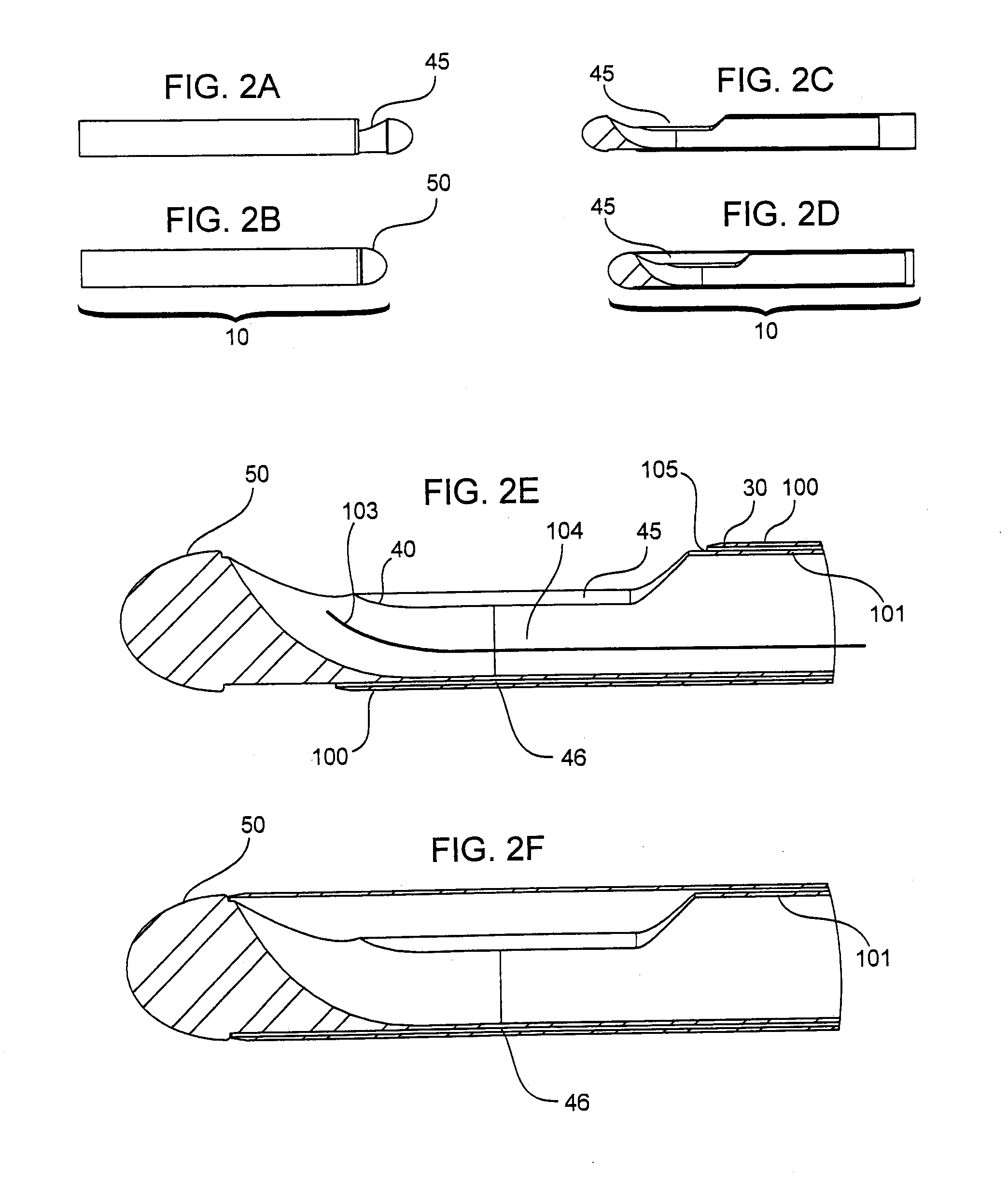Contralateral insertion method to treat herniation with device using visualization components
a technology of visualization components and insertion methods, applied in the field of flexible surgical cutting devices, can solve the problems of annulus tending to thicken, reducing the ability of elastic deformation under load, and drying out of the nucleus and becoming smaller and compressed
- Summary
- Abstract
- Description
- Claims
- Application Information
AI Technical Summary
Benefits of technology
Problems solved by technology
Method used
Image
Examples
example 1
Indirect Visualization
[0169]In general, a patient is examined and diagnosed with a herniated disc. Imaging technology such as MRI or an X-ray device is used to locate the position of the herniated disc. An introducer such as a hypodermic needle is provided that is inserted in a patient's body so that its distal end creates a small annular opening leading to the nucleus pulposus. A guide wire is slid into position within and through the introducer lumen so that a distal tip of the guide wire is positioned at the selected location within the nucleus by advancing or retracing the guide wire in the introducer lumen and optionally twisting the proximal end of the guide wire to precisely navigate the guide wire. A plurality of Guide Wires with different curvatures may be provided that enable the operator to navigate to precise locations within the nucleus pulposus.
[0170]A small incision is then made in the patient's skin and subcutaneous tissue which facilitates access of a dilator sheath...
example 2
[0174]In another exemplary embodiment for treating a herniated disc, a guide wire may be guided with fluoroscopic imaging to a position at the specific site of herniation. The guide wire may include markers which can be observed via X-ray and a bevel tip on the distal end and be made of a material having elastic or shape memory characteristics with a curvature at its' distal end. The guide wire may then be used to easily and accurately navigate to the herniation site to create a pathway for subsequent devices to follow to the herniation site. The Guide Wire may then be left in place to serve as a guide to the herniation site or subsequently inserted devices may follow the pathway left by the guide wire. The guide wire may be left in place or removed and the herniation site debulked as described in Example 1.
example 3
Direct Visualization
[0175]In general, a patient is examined and diagnosed with a herniated disc. Although direct visualization is to be used, imaging technology such as MRI or an X-ray device may still be used to locate the position of the herniated disc and the position may be marked on the patient.
[0176]An introducer such as a hypodermic needle is provided that is inserted in a patient's body so that its distal end creates an annular opening leading to the nucleus pulposus. A guide wire is slid into position within and through the introducer lumen so that a distal tip of the guide wire is positioned at the selected location within the nucleus by advancing or retracing the guide wire in the introducer lumen and optionally twisting the proximal end of the guide wire to precisely navigate the guide wire.
[0177]A small incision is then made in the patient's skin and subcutaneous tissue which facilitates access of a dilator sheath. The introducer is then removed and the dilator sheath i...
PUM
 Login to View More
Login to View More Abstract
Description
Claims
Application Information
 Login to View More
Login to View More - R&D
- Intellectual Property
- Life Sciences
- Materials
- Tech Scout
- Unparalleled Data Quality
- Higher Quality Content
- 60% Fewer Hallucinations
Browse by: Latest US Patents, China's latest patents, Technical Efficacy Thesaurus, Application Domain, Technology Topic, Popular Technical Reports.
© 2025 PatSnap. All rights reserved.Legal|Privacy policy|Modern Slavery Act Transparency Statement|Sitemap|About US| Contact US: help@patsnap.com



